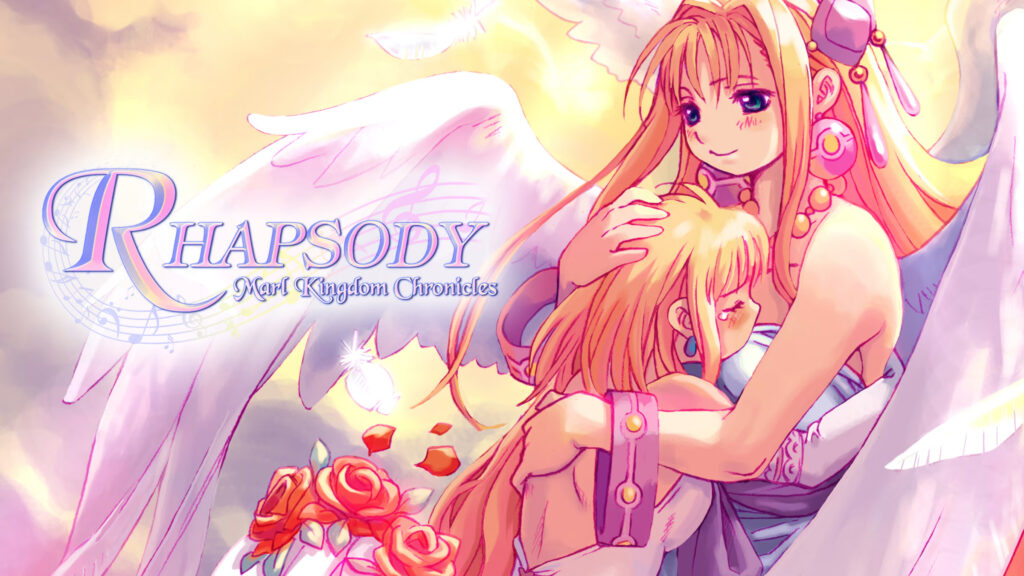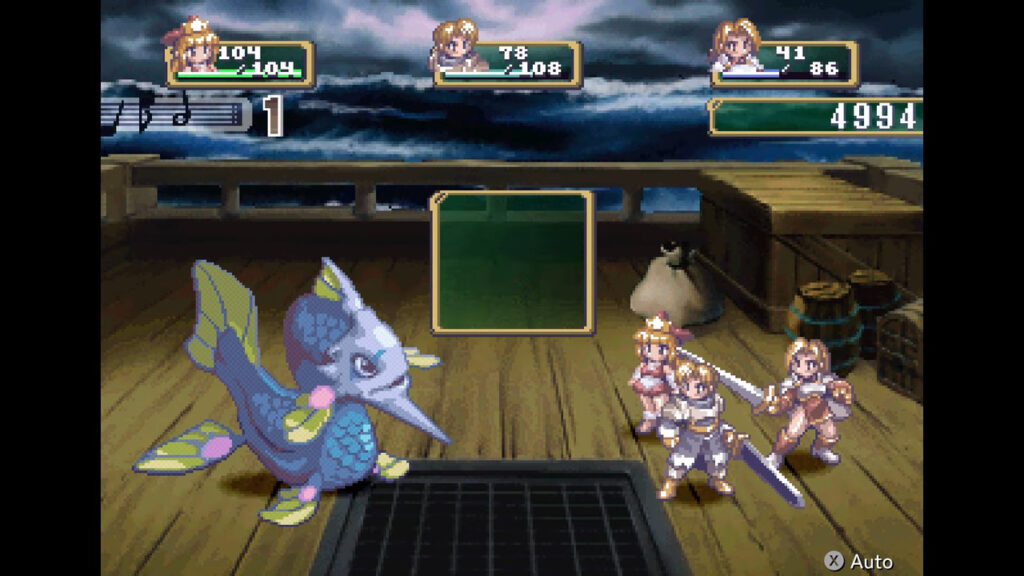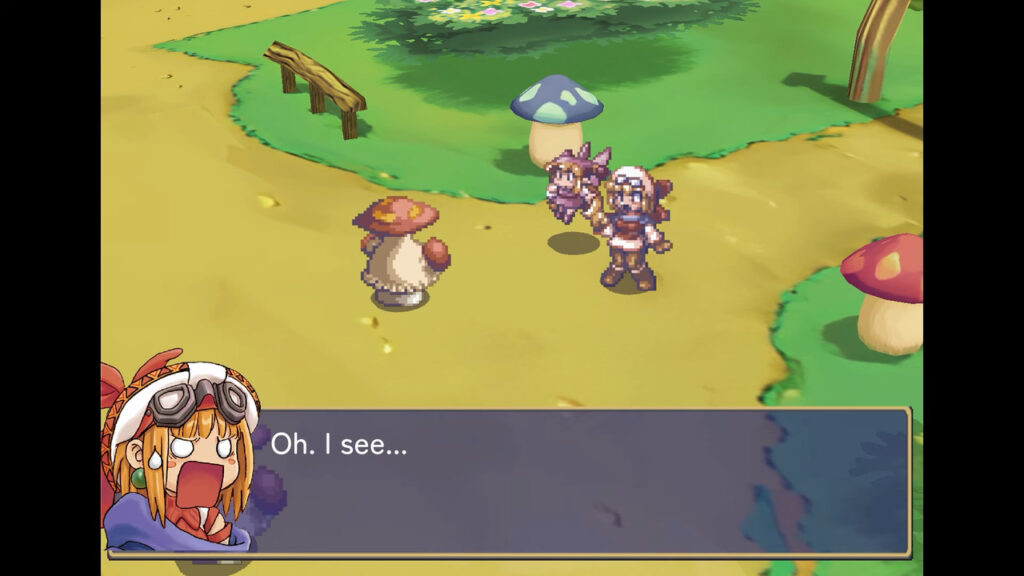
Developer: Nippon Ichi Software
Publisher: NIS
Platform: PS5, PC, Switch
Tested on: PS5
Rhapsody: Marl Kingdom Chronicles – Review
Last year, we took a look at Rhapsody: A Musical Adventure, a somewhat niche RPG that was ported to modern platforms under the Prinny Presents NIS Classics banner. It’s perhaps somewhat surprising that NIS decided to take a vastly different approach when it came to bringing the sequels to Rhapsody to Western audiences. The Prinny Presents logo is nowhere to be seen, as Rhapsody II and III are bundled together as Rhapsody: Marl Kingdom Chronicles. We would have preferred it if the original had been bundled together with the other two titles so that its slot in the Prinny Presents collection could have gone to a different game. Even so, it’s still exciting to finally be able to dive into Rhapsody II and III, especially since these games have never received an official localization before. How do these classic games hold up under modern scrutiny?
Story
We’ll start by reassuring you. You don’t need to have played the first Rhapsody game to be able to follow Rhapsody II’s narrative. If you have played Rhapsody I, you’ll get a kick out of all the references, but the plot of Rhapsody II is strong enough to stand on its own two feet. Rhapsody II: Ballad of the Little Princess, as the full title goes, tells the story of Princess Kururu. She is the daughter of Cornet, the protagonist of the first game. Kururu has definitely inherited her mother’s rebellious streak, despite being forced to live a sheltered life. When Kururu’s parents leave for a long journey, our plucky princess sees her chance and she escapes from the palace, bent on seeking a handsome prince to marry. That’s of course easier said than done, and both shenanigans and hilarity ensue.
Meanwhile, Rhapsody II: Memories of Marl Kingdom’s narrative takes on a more fragmented approach, with each of the six chapters focusing on a separate protagonist. These take place across Rhapsody’s overarching timeline, with Cornet making a return as a playable character in one chapter, and another acting as an epilogue to Kururu’s adventure, just to name a few. Of note here is that Rhapsody III ties the game’s world to La Pucelle, another NIS game series. The writing is excellent across both games, with an adorable cast and lots of absurd situations. One of our favorite story elements involves an ice cream shop that is staffed by particularly unhygienic cats, but there are plenty of other surprises here that are guaranteed to put a smile on your face.
Graphics
Although the original visuals have held up pretty well for the most part, NIS still pulled out some bells and whistles to spruce things up. There’s a filter, for example, that softens the pixelated edges of the original sprite art. We didn’t quite like how this looked and reverted to the unfiltered art, but your mileage may vary here. Of note is that Rhapsody III replaces the 2D background art with 3D visuals. While these would have been impressive at the time of release, they haven’t held up as well, and Rhapsody II’s environments definitely look more charming than those of the sequel. Likewise, the pixelated character portraits from Rhapsody II have been replaced by rather wonky character art in the sequel,
Sound
The one thing that stands out the most about Rhapsody games is that these are, in fact, musicals. You can take that literally: less than ten minutes into Rhapsody II, you’re treated to a duet between Kururu and her retainer, with a chorus of butlers and maids providing backup vocals. English voice acting was added to these releases, although all songs are still performed in their original Japanese, with subtitled lyrics. The overall soundscape is fantastic, from simple sound effects to catchy tunes, even if the sudden shift from English dialogue to Japanese songs does feel a bit weird at times.
Gameplay
It probably shouldn’t come as a surprise that both Rhapsody II and III follow a similar gameplay template to Rhapsody I. At their core, the Rhapsody games are simple, by-the-book turn-based RPGs, which shouldn’t be surprising given their age. Even so, there is an evolution noticeable across the trilogy, with each entry building on concepts introduced in previous games. The games see you take control of each respective protagonist, traveling from town to town as you talk to NPCs to take on quests and battle enemies along the way. The first Rhapsody game was a short affair, clocking in at around 12 hours to play through, and the sequels significantly expand upon this. That said, Rhapsody II still feels like a straightforward affair, as opposed to Rhapsody III, which comparatively adds more freedom, as you are able to take control of more characters thanks to the non-linear storyline.
The other major difference between the two games is in how they handle combat. Kururu has inherited her mother’s ability to control puppets, and so you’ll be building up an arsenal of these to take on monsters like frogs, fish and sentient mushrooms. The attacks of your puppets add to Kururu’s music meter, and once certain levels are reached on this, you’re able to unleash a special attack, which involves our protagonist hurling some kind of tasty treat at the enemies, dealing massage damage. Rhapsody III also involves summonable puppets, but combat is a lot more involved as your party takes to the battlefield as well, with their positioning deciding whether they are directly under your control, attacking enemies or auto-battling, assisting friends. To give you an idea of Rhapsody III’s expanded scale, you can have up to 16 combatants on the battlefield at once, which is impressive, especially given the game’s age. The non-linear approach also makes it that you’re essentially building separate parties for each chapter which adds another level of strategic thinking. That said, while both games are engaging, neither feels particularly challenging. Enemy AI is understandably limited, and it’s easy to master. However, the Rhapsody games hail from a different era, and rather than taunt the player with impossibly difficult boss fights, the aim here is clearly to offer silly little adventures, where ice cream shops are being run by cats and where you use cheesecake and literal farts to defeat enemies. It’s all very, very silly but also very, very fun.
Conclusion
The Rhapsody games have held up surprisingly well, even if the gameplay isn’t particularly challenging. Where the series excels is through excellent writing, an incredibly charming cast, and just all-around silliness. Whether or not these games will mesh with you depends on how serious you want your gaming experience to be. If you’re looking for the grimdark seriousness of something like Final Fantasy, you won’t find it here, but if a handmaiden using a machine gun to take down mermaids sounds like your idea of a good time, you’ll absolutely adore what Rhapsody: Marl Kingdom Chronicles has to offer. We feel as if Rhapsody I should have also been included here to offer a more complete package.









No Comments